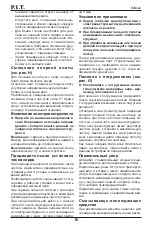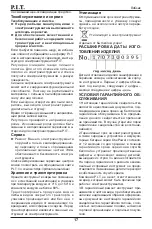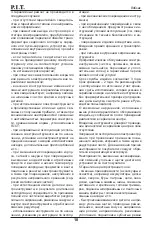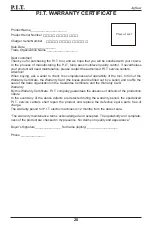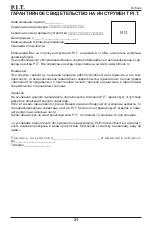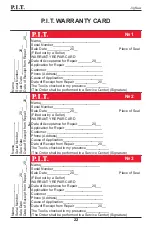
Jig Saw
7
► Avoid dust accumulation at the work-
place.
Dust can easily ignite.
Safety glass (see fi gure D)
Fit the safety glass before you connect the
power tool to the dust extraction system.
Attach the safety glass to the power tool so
that the bracket locks into place on the shock
protection guard.
Remove the safety glass when working with-
out a dust extraction system and for mitre/
bevel cuts.
Connecting the dust extraction
(see fi gures E-F)
Fit the extraction outlet in the recesses of the
base plate.
Ensure that the cam on the extraction outlet
slots into the corresponding recess of the
base plate as shown.
Connect a dust extraction hose to the ex-
traction outlet. Connect the dust extraction
hose to a dust extractor.
For optimum dust extraction, where possible
use the antisplinter guard.
Switch off the sawdust blower device when
you have connected the dust extraction sys-
tem.
The dust extractor must be suitable for the
material being worked.
Operation
Operating modes
► Pull the plug out of the socket before
carrying out any work on the power
tool.
Pendulum action settings
The pendulum action can be adjusted using
four different settings, allowing the cutting
speed, cutting capacity and the cut itself to
be optimally adapted to the material that you
want to cut.
Level 0 → No pendulum action
Level I → Low pendulum action
Level II → Moderate pendulum action
Level III → High pendulum action
The optimum pendulum level for each appli-
cation can be determined by a practical test.
Note the following recommendations:
- Select a lower pendulum level or switch off
the pendulum action completely if you wish
to produce a fi ner or cleaner cutting edge.
- Switch off the pendulum action when ma-
chining thin materials (e.g. sheets).
- Work on hard materials (e.g. steel) with
low pendulum action.
- You can work on soft materials and saw
wood in the direction of the grain using
maximum pendulum action.
Adjusting the mitre/bevel angle (see
fi gure H)
The base plate can be swivelled to the right or
left to make mitre cuts up to 45°.
The safety glass, the extraction outlet and the
antisplinter guard cannot be used while mitre/
bevel cuts are being made.
- Push the extraction outlet gently upward
and pull it out of the base plate.
- Remove the safety glass and the an-
ti-splinter guard.
- Loosen the screw with the hex key and
slide the base plate slightly towards the
power cable.
- The base plate has lock-in points on the
left and right so that precise mitre/bevel
angles can be set. Swivel the base plate
to the required position according to the
scale. Other mitre/bevel angles can be ad-
justed using a protractor.
- Then push the base plate towards the saw
blade as far as it will go.
- Retighten the screw.
Moving the base plate (see fi gure
H)
You can move the base plate back for sawing
close to edges.
Loosen the screw and push the base plate
towards the mains cable as far as it will go.
Retighten the screw.
Sawing with an off set base plate is only possi-
ble with a mitre/bevel angle of 0°. In addition,
the parallel guide with circle cutter as well as
the anti-splinter guard must not be used.
Starting Operation
► Pay attention to the mains voltage.
The voltage of the power source must
match the voltage specifi ed on the rat-
ing plate of the power tool.
Switching on: slide the switch (1) forward. For
continuous operation, press the switch until it
locks into place.
Switching off : press the rear end of the switch
(1) and then release.
Preselect the stroke rate
You can also preselect the stroke rate and
change it during operation using the stroke
rate preselection thumbwheel.
The required stroke rate is dependent on the
material and the work conditions and can be
determined using practical tests.
It is recommended that you reduce the stroke
rate when placing the saw blade on the work-
piece and when sawing plastic and alumini-

















